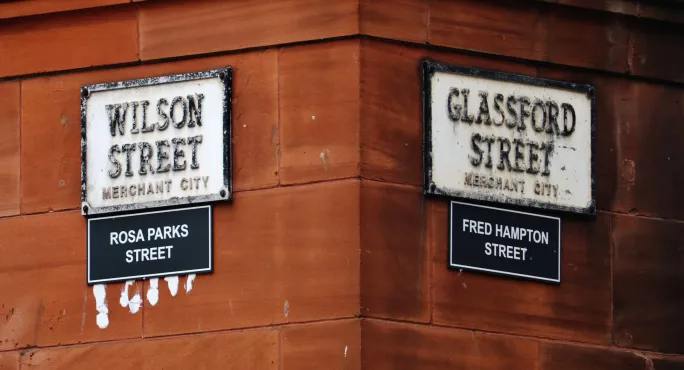The depicts a tobacco baronŌĆÖs prosperous household. Hidden in the background is an African boy, held in slavery as a servant.
This image illustrates ScotlandŌĆÖs relationship with slavery: a╠²rich white family dominates while╠²the enslaved people who made this wealth are forgotten.
Increasingly, there is more understanding of such issues╠²in Scotland,╠²with many schools already teaching them. However, more can be done, including:
-
Producing pupil-friendly materials that describe ScotlandŌĆÖs specific role in the trade.
-
Developing better links between school╠²teachers and academics who are studying slavery.
-
Including more explicit reference in exam courses to ScotlandŌĆÖs involvement in the slave╠²trade.
ScotlandŌĆÖs slavery role has often been a blind spot in Scottish history and education. For instance, numerous books that╠²formed part of my 1990s history degree make no mention of it.
░┐▒ĶŠ▒▓įŠ▒┤Ū▓į:╠²Scottish education can do better for BAME╠²pupils
▒Ę▒Ę╔▓§:╠²BAME people ŌĆśwoefully underrepresentedŌĆÖ in schools
Campaign:╠²ŌĆśAnti-racist action must involve curriculum reformŌĆÖ
Education secretary: Highlight colonial past to tackle racism
History:╠²Graphic novel tells the story of the slave trade
In recent years, various researchers have taken significant steps to change this.
Academics such as Diana Paton, Tom Devine, Stephen Mullen and newer scholars including Matthew Lee and Nelson Mundell have produced informative accounts.╠²Local historians are also illuminating their areaŌĆÖs connections, such as David Alston, who catalogues Highland involvement.
The next step is getting more of this research into schools.
Teachers face difficulties in finding╠²resources. Much of the work that exists is spread across multiple sources - not always easily available - or is not written in pupil-friendly language.
To that end, I designed -╠²with input from academics and classroom teachers - my own site summarising ScotlandŌĆÖs slavery connections, ŌĆ£Scotland and Atlantic SlaveryŌĆØ, which you can find .
Aimed at school pupils, it describes multiple aspects of Scottish involvement, including city, town and village links. It details specific peopleŌĆÖs roles, too, and╠²has sections╠²incorporating lesson ideas, primary sources and historiansŌĆÖ views.
My research involved visiting at least 50 different websites, and using around 20 books. Teachers across Scotland replicating these efforts would waste resources╠²- we need to make╠²shared materials more available.
Producing more such resources,╠²especially if involving academic experts,╠²would only encourage more teaching in schools.╠²Encouraging more direct connections between teachers and academics is also important.
Outside groups could be involved in these efforts, too.╠²For example, the BBC has produced many informative documentaries, but after a period they can no longer be accessed - could these be made more readily available?
The Scottish╠²government has promised╠²to do more to teach ScotlandŌĆÖs imperial history. This should consider how to connect teachers and academics, possibly including more time and opportunities for teacher CPD.
The exam system has a role to play, too. The Atlantic slave trade is a topic in both Nationals and Higher history. However, it falls within the British section of these course.╠²Many teachers include Scottish connections when teaching, but having explicit reference to Scotland in course outlines would encourage more understanding of the history of slavery and how it connects to contemporary Scottish society.
The servantŌĆÖs presence in the Glassford portrait was revealed simply by cleaning the image after years of dirt had obscured it╠²- and education can do the same to Scottish understanding of our countryŌĆÖs role in slavery.
Matthew Marr is a teacher of history in Ayrshire. He tweets at @mrmarrhistory

